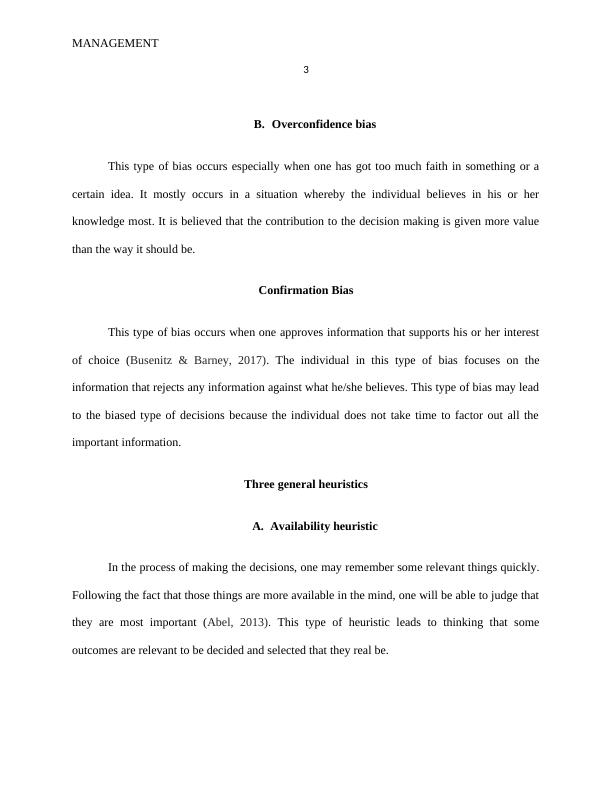Biases in Decision Making: Examining Heuristics and Their Associations
6 Pages1203 Words242 Views
Added on 2023-04-21
About This Document
This essay explores biases in decision making and examines the associations between biases and heuristics. It discusses selection bias, overconfidence bias, and confirmation bias, as well as availability heuristic, representativeness heuristic, and anchoring and adjustment heuristic. The essay also provides a scenario illustrating the association between confirmation bias and availability heuristic.
Biases in Decision Making: Examining Heuristics and Their Associations
Added on 2023-04-21
ShareRelated Documents
End of preview
Want to access all the pages? Upload your documents or become a member.
Psychological Aspect And Decision Making
|10
|2107
|14
(PDF) Heuristics and biases: The science of decision-making
|7
|1450
|204
Heuristics and Bias in Decision Making: Analysis of Human Mind's Capability
|10
|1298
|121
Behavioural Economics
|10
|2575
|369
Biases of Decision Making Process
|12
|2861
|272
Different Types of Biases Affecting Growth of Leaders in Business
|7
|1796
|85



